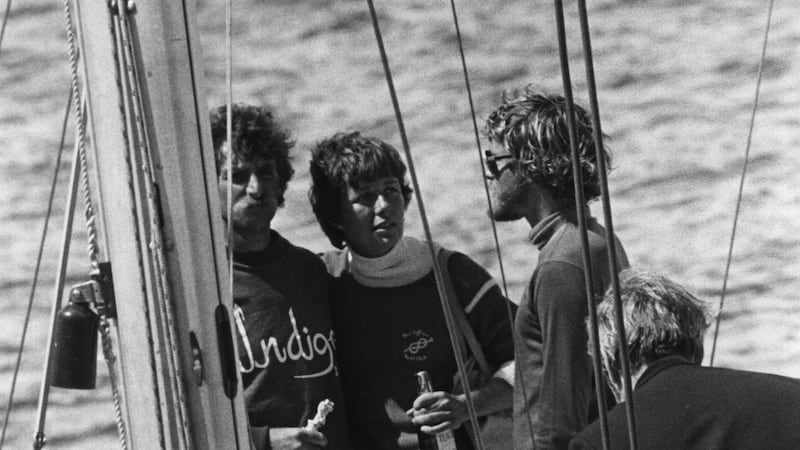On August 11th, 1979, when 303 yachts and almost 3,000 competitors set sail from Cowes, on the Isle of Wight, to take part in the Fastnet Race, the weather was beautiful and the sea was calm.
Three days later, only 86 yachts finished the race and 25 boats had sunk, were disabled, or abandoned; 75 had turned upside down and 19 people had drowned. Some 132 sailors were rescued by the Royal Navy and RAF helicopters, RNLI lifeboat crews and Irish Naval Service ship the LÉ Deirdre.
Unknown to most of the fleet as they set sail from the sheltered waters off the Isle of Wight, 2,000 miles away in the Atlantic a major storm was developing and soon the crews would face force 11 gales and mountainous waves as they headed out into the western approaches towards the Irish coast.
Lighthouse keepers
Gerald Butler, with Reggie Sugrue and Louis Cronin, was one of three Fastnet lighthouse keepers on duty that day 40 years ago and he could clearly see the mast lights of the first yachts fighting their way towards Fastnet Rock, as the waves crash against the tower of the lighthouse.
“The tower of the Fastnet looms 163ft above the sea. We were standing on the balcony with the huge waves breaking just 10ft below us, and we watched and recorded the mast numbers on the yachts as they rounded the rock,” Mr Butler says.
“Most of the deaths took place 100 miles east of the Fastnet, but there were a lot of yachts abandoned around the Fastnet. We could see them coming and as they rounded the rock we used our Aldis lamp to record the mast numbers, which we then sent on to the control centre at the Mizen.”

This record of the yachts as they approached proved invaluable, not only to the rescue services as they struggled to get to grips with the disaster but also to the families and friends awaiting news of the fate of the yachts and the crew members.
“The Aldis lamp, which is used to send Morse code signals, has a range of between seven and 10 miles, so we were able to pick out, even in bad weather, not only the mast numbers but we could also see the crews struggling on the decks as they approached the Fastnet.”
Voluntary act
The light keepers on the Fastnet had no official role in the operations during the Fastnet Race rescue and this action – the recording of the mast numbers and the transmission of these details to the Mizen – was a voluntary act on their behalf.
“We felt we had to do something,” Mr Butler recalls.
When a call came in from the lighthouse reporting a vessel in danger, Kieran Cotter, who was the coxswain of RNLI lifeboat The Robert, launched with his Baltimore crew mates into the storm.
“We were called out around 10.05pm and when we got to the scene we discovered that the boat we were looking for was sheltering from the storm in Long Island sound, so we headed for Cape Clear and that’s when we got the call that the Regardless was in trouble,” Mr Cotter says.
“There was a force 9 gale blowing at this point and the seas were very high, and we had to reconnect the towline five times before we got the yacht into harbour at about 8am the next morning. We were immediately called out again as another yacht, The Marionette, had also lost its rudder. Both yachts had brand-new rudders each made from carbon fibre, a brand-new technology in 1979.”
Deaths
He and his crew mates, the late Christy Collins, Peter O’Regan, Mick O’Connell, Paul O’Regan, Noel Cottrell and Con Cahalane, were by then on station for more than 24 hours.
“It was at this point that we heard of the deaths that had occurred further east towards the Scilly Isles. This was an unexpected, severe summer storm and proved once again that you can never take the sea for granted, even today with all the technology we have available.”
Mr Butler and Mr Cotter will gather with local mariners on Cape Clear this Sunday to honour and remember all those who died during the Fastnet Race in 1979 and to pay tribute to those who risked their lives to rescue those sailors 40 years ago.








